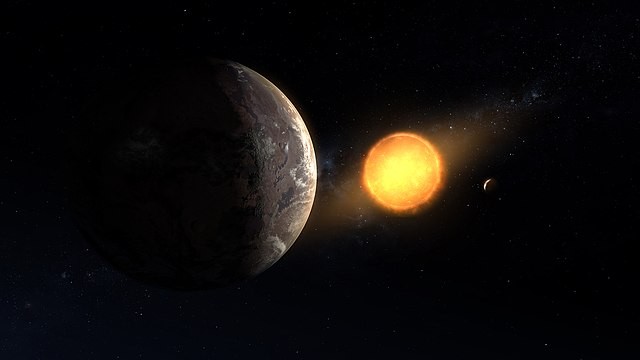
(Photo : Wikimedia Commons/NASA/Ames Research Center/Daniel Rutter)
A rare exoplanet was found in a habitable zone. Researchers were surprised upon realizing that it exists in a two-star binary system.
Exoplanet in Habitable Zone of Twin Stars
In a new study, astronomers discovered the planet TOI 4633 c or "Percival" with the help of citizen scientists. They sifted through the data collected by NASA's Transiting Exoplanet Survey Satellite (TESS) and noticed TOI 4633 passing in front of its star.
TESS detected the transient but consistent fading of the star's brightness. The "transit method" is what they used to find many of the hundreds of exoplanets that are known to exist outside of our solar system.
It was reportedly exceptionally far from its star, taking 272 days to revolve. This makes it one of five exoplanets with orbits longer than 100 days and the second-longest orbit of any TESS exoplanet, according to the researchers.
The planet is located exactly in the habitable zone, which astronomers define as the area surrounding a star where circumstances are ideal for liquid water to exist on a planet's surface and is thought to be necessary for life as we know it, because of its distance from its bright star host. The star's temperature and size determine the precise range of this zone.
The habitable zone for a star like our sun is located between Venus and Mars' orbits. On the other hand, the habitable zone is farther away for bigger, hotter stars.
More research revealed that the star in this far-off solar system is actually two stars orbiting one another, though astronomers are unable to identify which of the two TOI 4633 c is orbiting. The formation of planets surrounding binary stars is approximately half that of solitary stars, such as our sun. As a result, the star of TOI 4633 c is now by far the brightest star yet observed to support a transiting planet in the habitable zone.
According to Nora Eisner, principal investigator of Planet Hunters TESS and research fellow at the Flatiron Institute's Center for Computational Astrophysics in New York City, finding planets in multi-star systems is crucial for understanding how different planets can be made out of the same material. It was reportedly exciting that they found it.
Although these findings excite scientists, it may take up to 30 years for the two stars in the binary system to separate, enough for it to be possible to determine which star the planet is orbiting.
Eisner added that if they could determine the planet's orbit, it would be a significant step toward improving their knowledge of exoplanet formation. Also, it might one day enable them to infer planets that might be orbiting a star system from observations of its characteristics.
ALSO READ: Planetary Collision: 2 Icy Exoplanets Crash in Space Produce Blaze of Light, Enormous Plumes of Dust
Super-Earth Planet in Habitable Zone
In related news, another study found a super-Earth in the habitable zone, 137 light years away. Researchers were hopeful that it could hold the key to life.
The planet TOI-715 b, which is 1.5 times larger than Earth, is centered around a tiny reddish star that might provide enough heat to allow liquid water to exist on its surface, which is a prerequisite for life.
The researchers found that TOI-715 b circles far more tightly than Earth, completing an orbit every 19 days and touching the faces of its stars more regularly.
In Earth's terms, this is equal to one "year." It also suggests that the super-Earth's star is always facing one side of it.
There could be notable differences in temperature during the day and night due to the location's influence on the weather and environment.
In the same system, there may be an additional planet the size of Earth. The second Earth-like planet within TOI-175 b's orbit, if verified, would be the smallest planet discovered by TESS in the habitable zone.
RELATED ARTICLE: NASA's DART Spacecraft Worked! Asteroid Killer Changed the Harmless Space Rock's Orbit More Than Expected
Check out more news and information on Space in Science Times.


![Some Brain-Injured Patients Who Died After Life Support Was Withdrawn May Have Survived, Recovered Some Level of Independence 6 Months After Injury [Study]](https://1721181113.rsc.cdn77.org/data/thumbs/full/53613/89/56/50/40/some-brain-injured-patients-who-died-after-life-support-was-withdrawn-may-have-survived-recovered-some-level-of-independence-6-months-after-injury-study.jpg)











